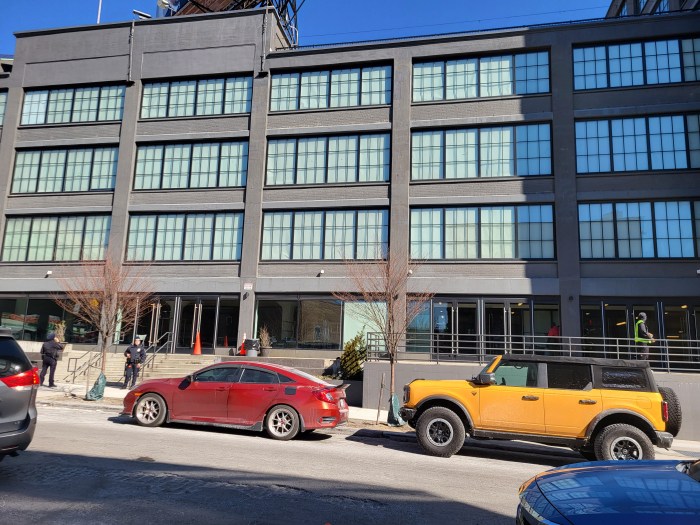SYDNEY and KUALA LUMPUR, Feb 25 2020 (IPS) — Meeting the President of the Republic of Korea in September 2019, President Donald J Trump bragged that the “US economy is the envy of the world”. Trump reiterated such claims in his State of the Union address in early February, hailing his own policies with typical humility.
Trump touted US economic success at the Davos World Economic Forum in January as “nothing short of spectacular”, asserting “I’m proud to declare the United States is in the midst of an economic boom, the likes of which the world has never seen before.”
Facts hardly matter
To the contrary, US economic growth slowed after Trump started the ‘trade war’ with China, dropping from 3.5% in the second quarter of 2018 to 2.1% in the last quarter of 2019, much less than the 5.5% per annum peak in the second quarter of 2014 during the Obama presidency.
Meanwhile, annual growth declined from 2.9% in 2018 to 2.3% in 2019. Growth in Trump’s first three years was well below the Clinton era (1993-2000) average around 4%, the highest for any presidency in the last half century, although growth was even higher at times in earlier years.
Obama inherited a recession following the global financial crisis from September 2008, with the deepest post-war contraction when real GDP fell by about -4% p.a. in the second quarter of 2009. The US economy then turned around by the end of that year.
While US growth peaked under Obama at almost 4% p.a. in the first quarter of 2015, Trump’s peak in the last three years was around 3% p.a. in mid-2018.
Making America great again?
The United Nations, the International Monetary Fund (IMF) and the World Bank all expect the US economy to continue slowing to 1.7-1.8% annually in 2020-2021. US manufacturing growth slowed to its lowest level in almost a decade in August 2019 as the purchasing managers’ index (PMI) signalled contraction for the first time since September 2009.
Meanwhile, with its agricultural sector experiencing higher levels of farm debt, the number of US farm bankruptcies grew by a fifth in 2019, from 498 in 2018 to 595, despite the government’s US$28 billion bailout for farmers, double the 2009 bailout of its Big Three automobile producers.
The US Congressional Research Service doubts that the supply-side incentive effects of Trump’s Tax Cuts and Jobs Act, mainly benefiting the wealthiest 10% of Americans, will be as significant as he claims.
Much of the funds released by the tax cut have been used for a record-breaking spree of stock buybacks, worth more than US$1 trillion in the first quarter of 2019, augmented by easy money policies.
In December 2019, the IMF noted that “Global growth recorded its weakest pace since the global financial crisis a decade ago” despite monetary policy easing all round.
Meanwhile, slower global growth has been increasingly blamed everywhere on the US-China trade war. Hence, while Trump’s attempts to ‘make America great again’ have largely failed to lift US growth, they have been harming the rest of the world.
Election economics
President Trump kicked off his 2020 re-election campaign at an Orlando, Florida rally in June 2019 with his characteristic modesty, claiming that the US economy under his watch was “perhaps the greatest economy we’ve had in the history of our country”.
To enhance his appeal, Trump has successfully pressured the US Federal Reserve to keep monetary policy and credit conditions ‘easy’. However, the funds have not gone into productive investments, but instead to portfolio investments, mergers, acquisitions and share buybacks, transferring more wealth and income to the rich.
Trump has also been repeatedly promising more tax cuts, ostensibly for the “middle-class”. His economic advisor, Larry Kudlow told Fox News that Trump wants to give the middle class a 10% tax cut in September, weeks before the polls.
Meanwhile, Trump has claimed victory and struck a less aggressive tone on international trade conflicts, declaring the end of hostilities with China in January after concluding the US Mexico Canada Agreement (USMCA), with some minor, largely cosmetic changes to the preceding North American Free Trade Agreement (NAFTA).
But he has also turned on Europe, threatening at Davos to levy huge tariffs on European car imports. This was followed by another threat from Treasury Secretary Steven Mnuchin to punish European countries that have the audacity to tax American digital firms.
The art of the ordeal
Trump Commerce Secretary Wilbur Ross’s blatant schadenfreude over the coronavirus outbreak that it could boost US jobs is telling. The coronavirus pandemic has shut down Chinese businesses and ports as efforts to contain the pandemic wreck China’s manufacturing supply chains.
Under the US-China Phase-One trade deal, China will increase imports of US farm goods by US$32 billion over two years, enhancing his appeal to the US rural farm vote.
So, if anything goes wrong, Trump can always blame China or the pandemic for any shortfalls, while heroically claiming to be protecting the US from a new Chinese threat. Meanwhile, Trump seems likely to ratchet up his rhetoric against Europe’s farmers.
To mitigate the economic impacts of the trade conflicts and the coronavirus outbreak, other countries, including China, are further easing monetary policy. The US Fed can thus more easily remain dovish, at least until November, ensuring more buoyant equity markets, and helping Trump’s re-election prospects.
The Donald has much reason to grin again.



























